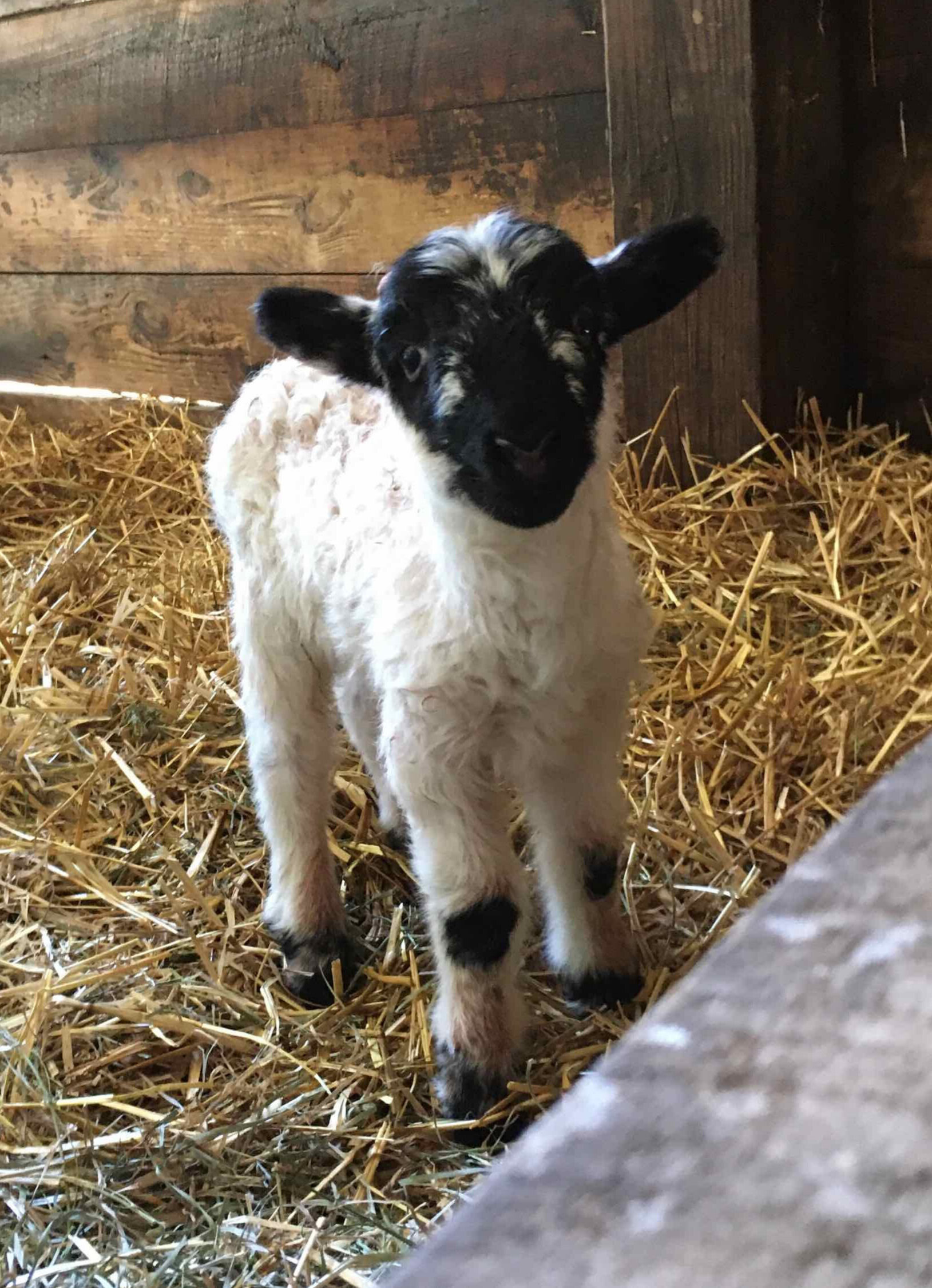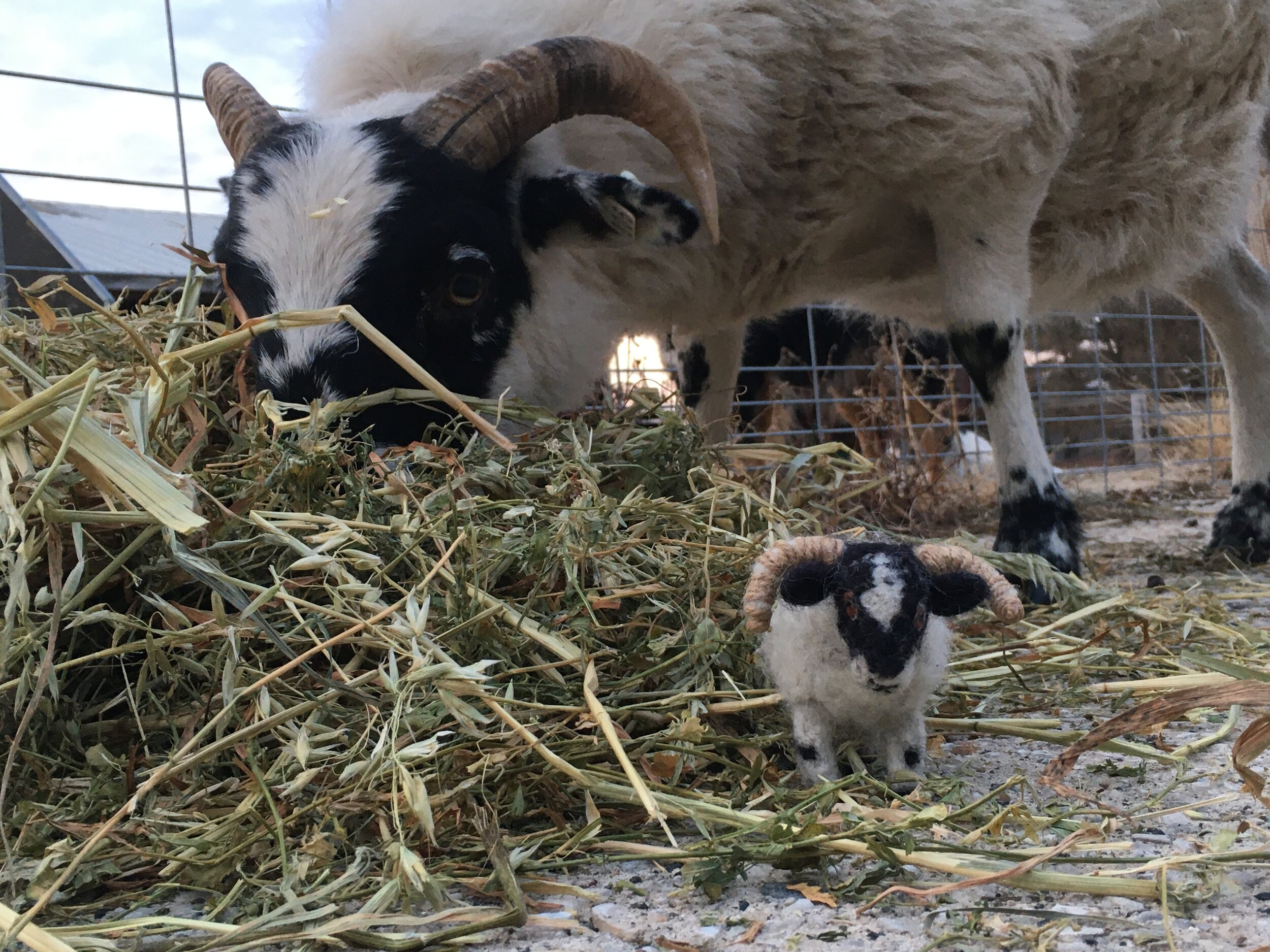
Preserving the pastoral
This lamb is super cute.
And it’s mother is a genius. That’s because Scottish Blackface ewes rarely need help at lambing time.
The sheep can lamb on pasture, though we bring them in for 24 - 48 hours to give ewe and lamb a good chance to bond, for tail docking, and numbering.
Scottish Blackface are seasonal breeders, coming into season in the autumn and producing lambs five months later. As the sheep grow a little more slowly than some other breeds, they should be bred as yearlings and not as lambs.
Grass is everything.
The sheep move through different pastures spending from a day or two to a week or more depending on the quality of the grazing. They do a good job of keeping down brush on our hillsides.
Independent Creatures
The ewes keep their lambs close by, a trait they came by in the rough hills of Scotland.
Both sexes have horns. They can survive without housing if given a pasture with some natural protection from wind. Our sheep almost never need a hoof trim.
We keep the sheep out on pasture for as long as possible, but as winter comes on, they stay closer to the barn so it’s easy for us to give them the hay we made in summer.
There are never enough lamb photos.
Scottish Blackface sheep are the heart of our stewardship of the 200 acres where we live in Wisconsin’s driftless region. The driftless is a special area of rolling hills, limestone rock outcroppings, and quiet river valleys untouched by glacial movements. Today, small farms dominate the driftless, and on Running Chicken Farm we maintain a pastoral life that blends the domestic with the wild.
Staff
Amelia Fairchild
Amelia’s mother was a co-conspirator in bringing home a goat for their suburban California backyard. Now, Amelia runs the horse power division at Running Chicken.
Bird Cupps
Bird grew up on the flat land of Northern Illinois and always figured she’d raise goats in the Driftless. Turns out it was sheep. Bird is the chief instigator and project maven at Running Chicken.
Ezra
Ezra is a karakachan livestock guard dog. He is kind to everyone and barks at coyotes. (They haven’t figured out the “kind” part.) Karakachans originated in Bulgaria and are close guarding dogs, meaning they stick to home. We’re happy about that.
Elise
A companion to sheep whose unique appearance gives predators pause and she is a generally congenial resident.
Lambie
A suffolk/ramboullet/finn wether who kept our rams company for many years. We miss his devoted service.





















